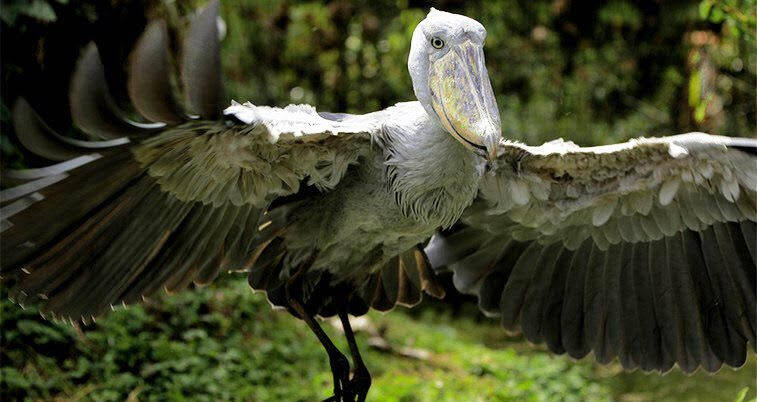

And shoebill storks are great at this! 9. To successfully ambush prey, they also have to remain silent while waiting for the right moment of attack. They will stand or sit in their hiding places for hours, waiting for prey – making sure to keep perfectly still to blend in with the darkness. They are patient and silentĪnother reason shoebill storks are excellent predators is that they are extremely patient. However, sometimes they even kill their siblings. This fighting starts at the age of 2 months and the winning bird usually forces the other to flee and live on their own. Young shoebills born in the same nest will fight each other to compete for their mother’s attention. Their aggressive and territorial behavior is evident even from a young age.


You may also like: How Strong Are Grizzly Bears? (Compared) 7. Their diet typically consists of lizards, snakes, fish, frogs, rodents, snails, and baby crocodiles. Their reinforced beak and skull are like shock absorbers during the thrusts. They will thrust out their beaks at great speed to surprise, decapitate, and capture their prey. These birds are ambush predators that mostly hunt at night. However, the shoebill stork is aggressive and known to attack and fight Nile crocodiles, especially if they are disturbed. Living in marshes and swamps can be difficult, with limited food supplies and plenty of predators. However, shoebill storks are actually closer related to pelicans. This habit has initially made scientists believe they were within the true stork family since all true storks use their own poop to cool off. Their poop has a lot of liquids and once the liquid evaporates from their legs, it helps cool them down. Shoebills practice the habit of pooping on their legs to help lower their body temperature – known as urohydrosis. They will fly with their neck and head folded backward to help them maintain longer flights with increased aerodynamics. These birds use their wings to intimidate predators, fly, and help keep their balance since they can lose balance easily when standing. However, when they fly, they have one of the slowest flaps of any bird, going at a pace of 150 flaps per minute. The shoebill stork’s wings can expand up to 7.64 feet, while the bird’s average height is around 3.3. The shape and size of their beaks give them an almost dinosaur-like appearance. Their large beaks curve down at the end, forming a hook, and they use this sharp curve to pierce through their prey’s bodies. The shoebill stork gets their name from their shoe-shaped beak that can reach up to 7.4 or 9.4 inches long and 4 inches wide. Shoebills can stay alive to see seven generations easily. The average lifespan of a shoebill stork ranges from 35 to 50 years, which is a long time, especially for birds.

This increases the shoebill’s chances of capturing its prey, especially since lungfish are one of their favorite meals. They prefer habitats with poorly oxygenated water because the fishes tend to surface for air frequently. You can find shoebill storks in East Africa, especially in marshes and freshwater swamps of counties like Uganda, Zambia, Sudan, Kenya, and Tanzania. Let’s learn more about these odd-looking, rare, and aggressive birds with 14 interesting facts! 14 facts about shoebill storksįrom where they live and how they hunt to ways they cool off, here are 14 facts about shoebills. Their scientific name Balaeniceps rex translates to “shoebill, whale-headed stork,” and if you look at their head, you can probably tell why. A large and dangerous bird, the shoebill stork, is an interesting-looking animal with plenty of interesting facts about them.


 0 kommentar(er)
0 kommentar(er)
